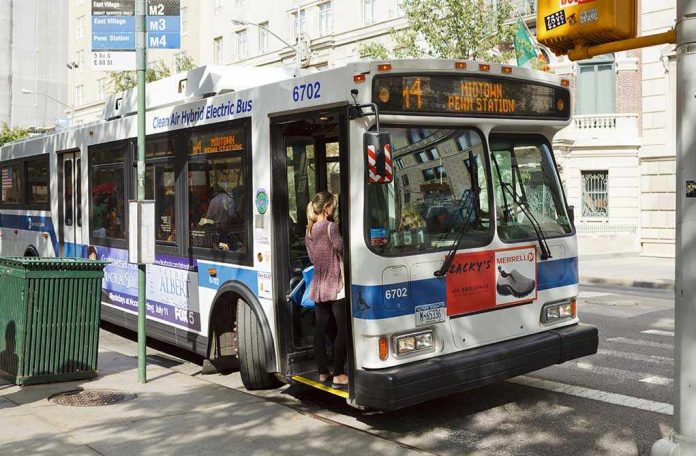
Stockholm’s morning calm shattered in seconds as a double-decker bus plowed into a crowded bus stop, exposing how fragile safety can be in the heart of a modern city.
Story Snapshot
- A double-decker bus crashed into a Stockholm bus stop, causing multiple fatalities and injuries.
- The disaster unfolded during peak morning hours, amplifying its impact and chaos.
- Rescue teams worked frantically to extract trapped survivors from the collapsed structure.
- Authorities launched an urgent investigation as the city grappled with fear and uncertainty.
Chaos Erupts Amid Stockholm’s Morning Routine
Stockholm’s morning rush is usually a ballet of buses, bikes, and brisk walkers. On November 15, 2025, routine gave way to horror when a double-decker bus veered into a busy bus stop. The impact was violent, flattening the shelter and trapping commuters beneath twisted steel and shattered glass. The city’s famed sense of order vanished, replaced by the sirens of emergency crews and cries for help. Survivors described a split second when normal life became a rescue scene.
First responders arrived within minutes, confronting a scene more reminiscent of a disaster drill than a weekday commute. Police cordoned off the area, firefighters fought to clear debris, and paramedics worked to stabilize the wounded. The number of fatalities rose rapidly, with several more in critical condition. Witnesses spoke of confusion and disbelief—one moment chatting about weekend plans, the next searching for loved ones in the chaos.
Emergency Response and Investigation Unfolds
Authorities faced immediate pressure to control the situation and reassure a shaken public. The city mobilized its full emergency response arsenal: specialized rescue units, trauma teams, and investigators. Their priorities shifted from saving lives to understanding what caused the crash. Questions echoed: Was this driver error, a mechanical failure, or a flaw in the city’s transit system? The bus operator, confronted by public scrutiny, pledged cooperation with the investigation.
Stockholm’s officials urged calm while promising transparency. The area around the crash remained locked down, disrupting a major transit artery. Media swarmed the scene, amplifying public anxiety as updates trickled out. As survivors received care and families were notified, investigators began piecing together the event’s timeline, searching for clues amid the wreckage.
The Ripple Effects on City Life
The immediate aftermath strained Stockholm’s emergency services. Hospitals braced for an influx of critical patients, while transit workers scrambled to reroute buses and restore order. The disaster sparked a citywide conversation about safety: could this have been prevented, and what must change to ensure it doesn’t happen again? The bus stop’s structural collapse raised alarms over urban infrastructure, fueling debates about protective barriers and maintenance standards.
Long-term reverberations began almost immediately. Calls for regulatory reform grew louder. City planners faced demands to revisit transit safety protocols, while public trust in mass transportation wavered. Insurance companies anticipated claims and lawsuits, and politicians prepared for the inevitable reckoning. The incident’s shadow lingered over morning commutes, as Stockholmers wondered if their city’s reputation for safety was more fragile than they realized.
Who Bears Responsibility and What Comes Next?
The investigation’s outcome will shape the next chapter for Stockholm’s transit system. If the cause lies in mechanical failure, double-decker buses may face stricter maintenance checks and design reviews. If driver error is to blame, training and oversight will be scrutinized. City authorities must balance the urgency for answers with the need to maintain public confidence. Victims’ families deserve more than condolences—they require accountability and support.
Public transportation experts, urban planners, and safety engineers will weigh in as more details emerge. Their analyses could prompt sweeping changes, not only in Stockholm but across cities relying on mass transit. The tragedy also exposed gaps in emergency preparedness and infrastructure resilience. In the weeks ahead, Stockholm faces a choice: recommit to safety and transparency, or risk further eroding public faith in its public transportation lifeline.
Sources:
A bus crashes into a bus stop in Stockholm, killing 3 people and injuring 3



